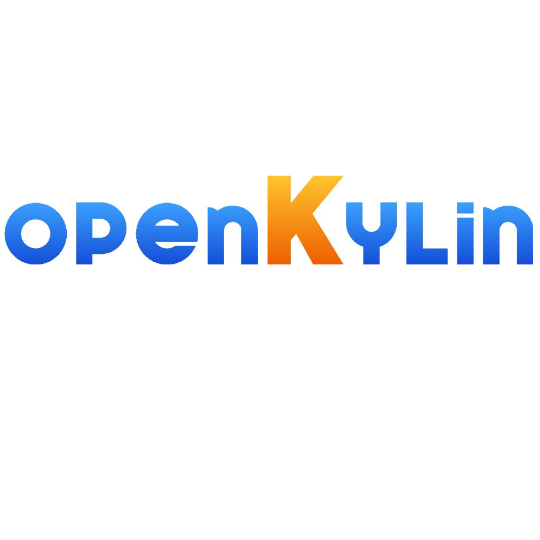Slick项目中使用Scala 3时Lambda参数括号的注意事项
2025-06-29 17:44:23作者:范垣楠Rhoda
在Slick项目中升级到Scala 3时,开发者可能会遇到一个常见的语法变更问题——Lambda表达式参数类型的括号要求。这个问题在Slick的表映射定义中尤为常见,需要特别注意。
问题背景
在Scala 2.x版本中,Lambda表达式的参数类型可以直接跟在参数后面,不需要额外的括号包裹。例如:
val f = { x: Int => x * x }
然而,在Scala 3中,这种写法不再被允许。当Lambda参数后面跟着类型注解时,必须用括号将参数和类型包裹起来。上述代码在Scala 3中会报错,需要修改为:
val f = { (x: Int) => x * x }
在Slick项目中的具体表现
这个问题在Slick的表映射定义中特别容易遇到,因为Slick经常使用<>操作符来定义表行到case类的映射关系。典型的错误代码如下:
def * : ProvenShape[ChannelLink] = (wiringEquipmentLinkId, inputChannelId, outputChannelId) <> ( {
case (wiringEquipmentLinkId, inputChannelId, outputChannelId) =>
ChannelLink(wiringEquipmentLinkId, inputChannelId, outputChannelId)
}, { w: ChannelLink =>
Some((w.WiringEquipmentLinkId, w.InputChannelId, w.OutputChannelId))
})
在Scala 3中,这段代码会报错,提示"Could not infer type for parameter x$1 of anonymous function"和"Not found: w"等错误信息。
解决方案
正确的写法应该是为Lambda参数添加括号:
def * : ProvenShape[ChannelLink] = (wiringEquipmentLinkId, inputChannelId, outputChannelId) <> ( {
case (wiringEquipmentLinkId, inputChannelId, outputChannelId) =>
ChannelLink(wiringEquipmentLinkId, inputChannelId, outputChannelId)
}, { (w: ChannelLink) =>
Some((w.WiringEquipmentLinkId, w.InputChannelId, w.OutputChannelId))
})
迁移建议
对于正在将Slick项目从Scala 2迁移到Scala 3的开发者,建议使用Scala 3迁移工具来帮助自动修复这类语法问题。可以添加sbt插件:
addSbtPlugin("ch.epfl.scala" % "sbt-scala3-migrate" % "0.6.1")
然后执行迁移命令:
migrateSyntax <project>
这个工具会自动将不符合Scala 3语法的Lambda表达式转换为正确形式。
总结
Scala 3对Lambda表达式的语法要求更加严格,特别是在参数类型注解的情况下必须使用括号。这一变化虽然小,但在Slick的表映射定义中经常遇到,开发者需要特别注意。使用Scala 3迁移工具可以大大简化迁移过程,减少手动修改的工作量。
登录后查看全文
热门项目推荐
相关项目推荐
 kernelopenEuler内核是openEuler操作系统的核心,既是系统性能与稳定性的基石,也是连接处理器、设备与服务的桥梁。C033
kernelopenEuler内核是openEuler操作系统的核心,既是系统性能与稳定性的基石,也是连接处理器、设备与服务的桥梁。C033 Kimi-K2-ThinkingKimi K2 Thinking 是最新、性能最强的开源思维模型。从 Kimi K2 开始,我们将其打造为能够逐步推理并动态调用工具的思维智能体。通过显著提升多步推理深度,并在 200–300 次连续调用中保持稳定的工具使用能力,它在 Humanity's Last Exam (HLE)、BrowseComp 等基准测试中树立了新的技术标杆。同时,K2 Thinking 是原生 INT4 量化模型,具备 256k 上下文窗口,实现了推理延迟和 GPU 内存占用的无损降低。Python00
Kimi-K2-ThinkingKimi K2 Thinking 是最新、性能最强的开源思维模型。从 Kimi K2 开始,我们将其打造为能够逐步推理并动态调用工具的思维智能体。通过显著提升多步推理深度,并在 200–300 次连续调用中保持稳定的工具使用能力,它在 Humanity's Last Exam (HLE)、BrowseComp 等基准测试中树立了新的技术标杆。同时,K2 Thinking 是原生 INT4 量化模型,具备 256k 上下文窗口,实现了推理延迟和 GPU 内存占用的无损降低。Python00 kylin-wayland-compositorkylin-wayland-compositor或kylin-wlcom(以下简称kywc)是一个基于wlroots编写的wayland合成器。 目前积极开发中,并作为默认显示服务器随openKylin系统发布。 该项目使用开源协议GPL-1.0-or-later,项目中来源于其他开源项目的文件或代码片段遵守原开源协议要求。C00
kylin-wayland-compositorkylin-wayland-compositor或kylin-wlcom(以下简称kywc)是一个基于wlroots编写的wayland合成器。 目前积极开发中,并作为默认显示服务器随openKylin系统发布。 该项目使用开源协议GPL-1.0-or-later,项目中来源于其他开源项目的文件或代码片段遵守原开源协议要求。C00 HunyuanOCRHunyuanOCR 是基于混元原生多模态架构打造的领先端到端 OCR 专家级视觉语言模型。它采用仅 10 亿参数的轻量化设计,在业界多项基准测试中取得了当前最佳性能。该模型不仅精通复杂多语言文档解析,还在文本检测与识别、开放域信息抽取、视频字幕提取及图片翻译等实际应用场景中表现卓越。00
HunyuanOCRHunyuanOCR 是基于混元原生多模态架构打造的领先端到端 OCR 专家级视觉语言模型。它采用仅 10 亿参数的轻量化设计,在业界多项基准测试中取得了当前最佳性能。该模型不仅精通复杂多语言文档解析,还在文本检测与识别、开放域信息抽取、视频字幕提取及图片翻译等实际应用场景中表现卓越。00 GLM-4.7GLM-4.7上线并开源。新版本面向Coding场景强化了编码能力、长程任务规划与工具协同,并在多项主流公开基准测试中取得开源模型中的领先表现。 目前,GLM-4.7已通过BigModel.cn提供API,并在z.ai全栈开发模式中上线Skills模块,支持多模态任务的统一规划与协作。Jinja00
GLM-4.7GLM-4.7上线并开源。新版本面向Coding场景强化了编码能力、长程任务规划与工具协同,并在多项主流公开基准测试中取得开源模型中的领先表现。 目前,GLM-4.7已通过BigModel.cn提供API,并在z.ai全栈开发模式中上线Skills模块,支持多模态任务的统一规划与协作。Jinja00 GLM-TTSGLM-TTS 是一款基于大语言模型的高质量文本转语音(TTS)合成系统,支持零样本语音克隆和流式推理。该系统采用两阶段架构,结合了用于语音 token 生成的大语言模型(LLM)和用于波形合成的流匹配(Flow Matching)模型。 通过引入多奖励强化学习框架,GLM-TTS 显著提升了合成语音的表现力,相比传统 TTS 系统实现了更自然的情感控制。Python00
GLM-TTSGLM-TTS 是一款基于大语言模型的高质量文本转语音(TTS)合成系统,支持零样本语音克隆和流式推理。该系统采用两阶段架构,结合了用于语音 token 生成的大语言模型(LLM)和用于波形合成的流匹配(Flow Matching)模型。 通过引入多奖励强化学习框架,GLM-TTS 显著提升了合成语音的表现力,相比传统 TTS 系统实现了更自然的情感控制。Python00 Spark-Formalizer-X1-7BSpark-Formalizer 是由科大讯飞团队开发的专用大型语言模型,专注于数学自动形式化任务。该模型擅长将自然语言数学问题转化为精确的 Lean4 形式化语句,在形式化语句生成方面达到了业界领先水平。Python00
Spark-Formalizer-X1-7BSpark-Formalizer 是由科大讯飞团队开发的专用大型语言模型,专注于数学自动形式化任务。该模型擅长将自然语言数学问题转化为精确的 Lean4 形式化语句,在形式化语句生成方面达到了业界领先水平。Python00
最新内容推荐
TJSONObject完整解析教程:Delphi开发者必备的JSON处理指南 谷歌浏览器跨域插件Allow-Control-Allow-Origin:前端开发调试必备神器 JDK 8u381 Windows x64 安装包:企业级Java开发环境的完美选择 Windows Server 2016 .NET Framework 3.5 SXS文件下载与安装完整指南 IK分词器elasticsearch-analysis-ik-7.17.16:中文文本分析的最佳解决方案 基恩士LJ-X8000A开发版SDK样本程序全面指南 - 工业激光轮廓仪开发利器 QT连接阿里云MySQL数据库完整指南:从环境配置到问题解决 基于Matlab的等几何分析IGA软件包:工程计算与几何建模的完美融合 咖啡豆识别数据集:AI目标检测在咖啡质量控制中的革命性应用 CrystalIndex资源文件管理系统:高效索引与文件管理的最佳实践指南
项目优选
收起
deepin linux kernel
C
26
10
OpenHarmony documentation | OpenHarmony开发者文档
Dockerfile
427
3.28 K
本项目是CANN提供的数学类基础计算算子库,实现网络在NPU上加速计算。
C++
689
343
暂无简介
Dart
686
161
Ascend Extension for PyTorch
Python
235
267
Nop Platform 2.0是基于可逆计算理论实现的采用面向语言编程范式的新一代低代码开发平台,包含基于全新原理从零开始研发的GraphQL引擎、ORM引擎、工作流引擎、报表引擎、规则引擎、批处理引引擎等完整设计。nop-entropy是它的后端部分,采用java语言实现,可选择集成Spring框架或者Quarkus框架。中小企业可以免费商用
Java
9
1
React Native鸿蒙化仓库
JavaScript
266
327
🎉 (RuoYi)官方仓库 基于SpringBoot,Spring Security,JWT,Vue3 & Vite、Element Plus 的前后端分离权限管理系统
Vue
1.22 K
669
🔥LeetCode solutions in any programming language | 多种编程语言实现 LeetCode、《剑指 Offer(第 2 版)》、《程序员面试金典(第 6 版)》题解
Java
65
19
openEuler内核是openEuler操作系统的核心,既是系统性能与稳定性的基石,也是连接处理器、设备与服务的桥梁。
C
56
33